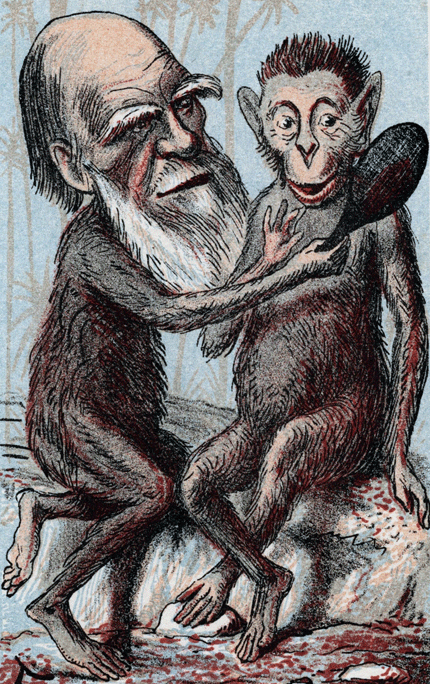
No scientific work had ever caused such an immediate stir, both in academic circles and beyond. Darwin was now the most celebrated naturalist in the world. His books were soon translated into many different languages. Journals and magazines reported on his publications, sometimes misrepresenting them. Looking further afield, his ideas had an impact on the arts and humanities in keeping with other, older concepts. It was as if society in the second half of the 19th century expected – but also feared – the confirmation provided by Darwin that life had been evolving ever since it appeared, that new forms had replaced older ones and that we had far more in common with plants and animals than had ever been imagined.
In the exhibition, be sure not to miss…
"The caricatures"
So what is happening in the field of evolutionary science today at the start of the 21st century? Although Darwin laid the foundations for a field of research that remains highly relevant, he knew almost nothing about how heredity and genetics worked. Yet his basic theory is still sound. Over more than a century and a half of major discoveries in biology, it has been confirmed, expanded, reformulated and sometimes contradicted, not only because of the nature and methods of evolutionary science, but also and especially due to its far-reaching significance. The ideas put forward by Darwin at the end of the 19th century are still finding new applications today.



